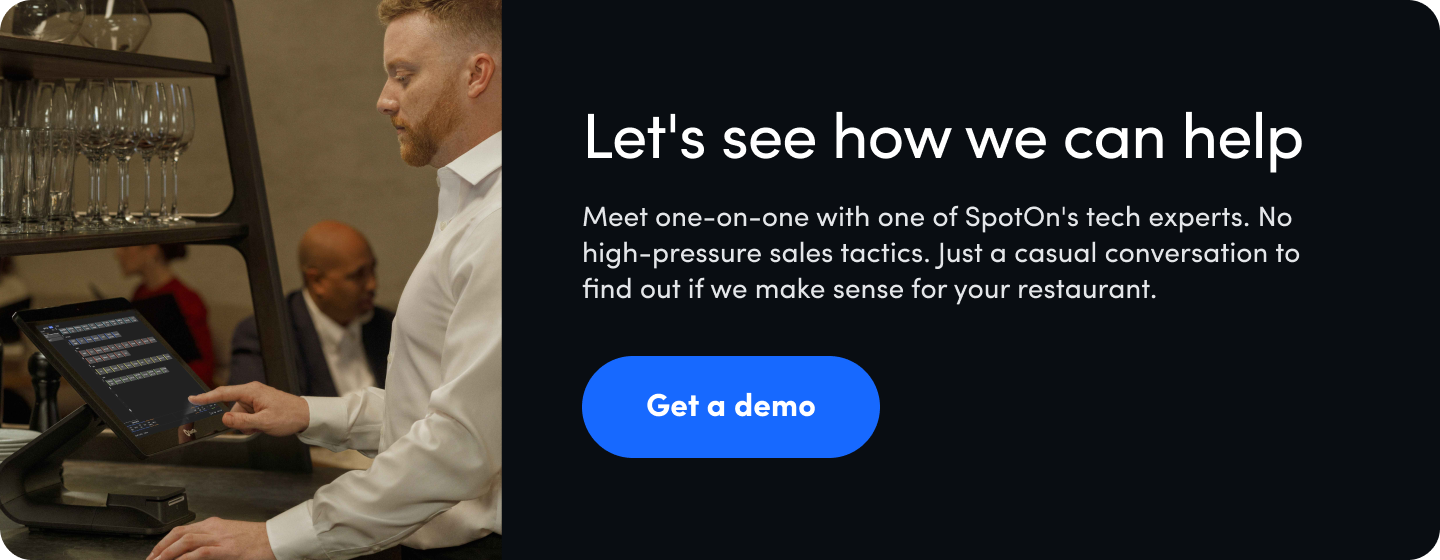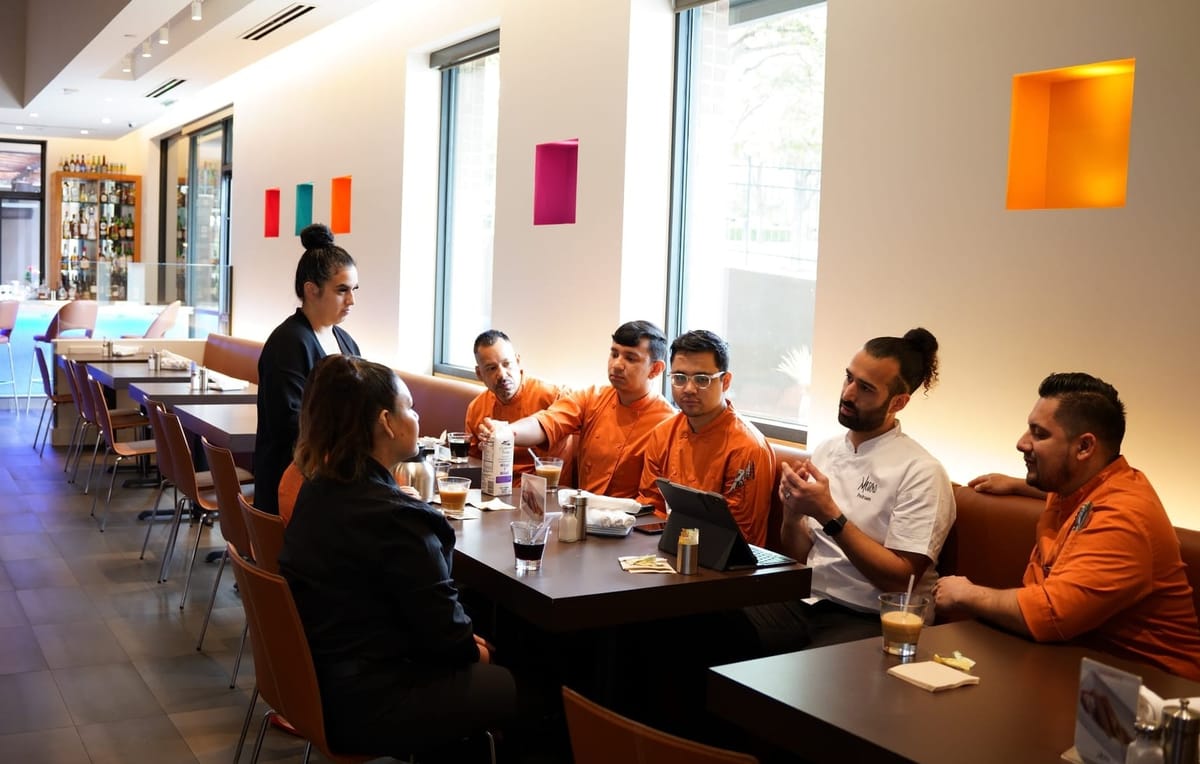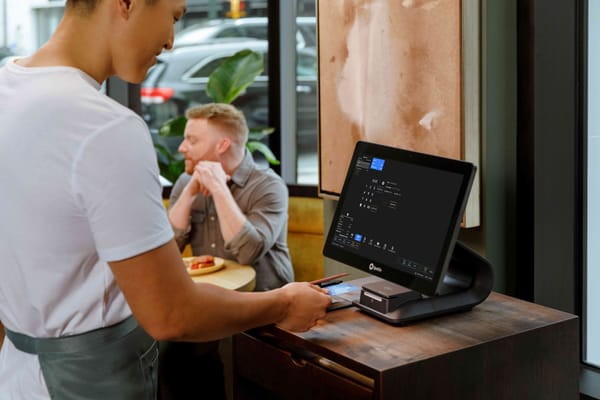Creating a restaurant schedule can feel like a jigsaw puzzle. Except 10 pieces have gone missing, someone spilled sauce on the reference photo, and your puzzle workspace is covered in spreadsheets. Even a seasoned GM can find themselves spending upwards of 6 hours a week on the scheduling process. It's time that could be spent on training, engaging with guests, or even clocking out early to play pickleball on a quest for some work-life balance.
The main challenge restaurant managers face is that you can't please everyone. As a GM, you're balancing the restaurant's profitability with employee paychecks and staff well-being with high-quality service. The owner might be strict about overtime pay, and city and state laws and regulations put additional limits on staff scheduling. But the show must go on.
Thankfully, GMs aren't fated to a life of spreadsheets and metaphorical jigsaw puzzles in the stuffy back office. When your restaurant POS software integrates with restaurant management software, the to-do list shrinks. Access to sales and labor data, as well as automatic scheduling and team communication tools, are essential tools in the manager's toolkit.
Combine smart tech and good management, and you'll be creating expert schedules in minutes—not fussing around with puzzle analogies.
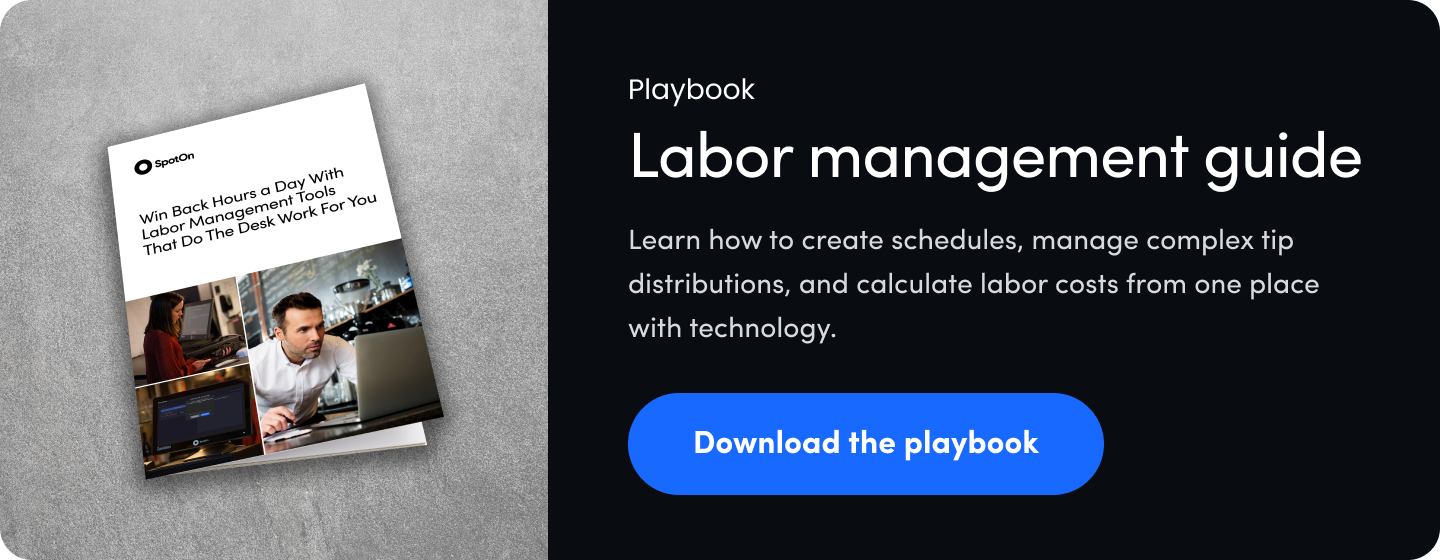
1. Set your staff schedule ahead of time
The restaurant business can feel like a mad sprint to put out fires, both real and metaphorical. The concept of planning ahead is aspirational, like high double-digit margins and skillets that clean themselves. However, it only takes small steps to create and communicate staff schedules earlier, and doing so can have a big impact on operations and employee satisfaction.
Some cities have ordinances that require managers to communicate restaurant work schedules at least 2 weeks ahead of time and compensate employees for any last-minute scheduling changes. Setting monthly schedules, with the knowledge that things might change and certain shifts will get shuffled around, can help employees plan ahead of time.
Creating restaurant shift schedules in advance also helps you prepare for busy periods, like Valentine's Day or game day, by increasing the odds that you'll be fully staffed (with the best staff members). While advance notice is the goal, you can prepare for unknowns with on-call shifts where you schedule employees based on guest volume.
When the restaurant schedule gets sent out, you can mark one or two employees as "on call" and require them to check in the same day on whether they're needed. This might even be an attractive option for employees with flexible schedules who are looking to pick up more open shifts. These might be shorter shifts where the employee supports scheduled servers or takes over additional tables, like patio guests.
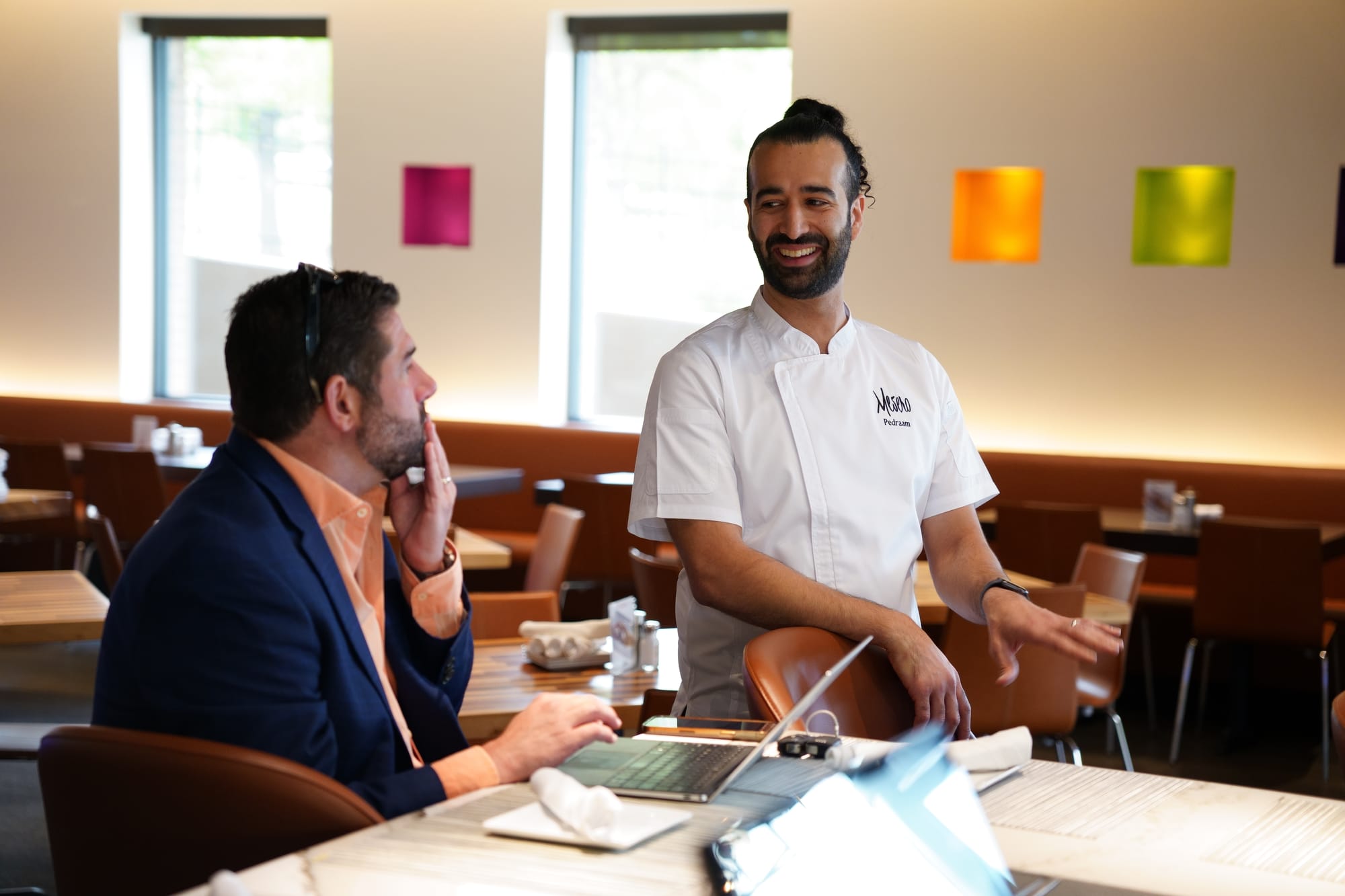
2. Take employee requests into account
If you're scheduling a large number of employees, you're going to be juggling time off requests with busy shifts and overtime labor laws. There's no such thing as a perfect restaurant schedule. But making a concerted effort to factor employee requests into your shift scheduling shows you care about their needs and decreases the likelihood that employees will swap shifts.
The best way to keep employees happy with the work schedule is to create an open channel of communication so your restaurant employees feel comfortable coming to you with time off requests and work schedule preferences.
If you use a scheduling tool with an employee app, employees can submit requests within the app that automatically post upon manager approval. This makes time off and sick days easier to account for and helps reduce the back-and-forth when it comes to swapped shifts.
Outline clear scheduling policies in the employee handbook and go over them during onboarding. How early should employees communicate their shift schedule requests? How flexible is your restaurant employee schedule? Setting expectations from the jump will help you handle last-minute requests and treat employees fairly further down the line.
3. Communicate
You're taking care of the restaurant scheduling in advance, setting your future schedules with plenty of lead time. You're taking into account operational needs and have created a new restaurant schedule that keeps labor costs low. The next challenge? Communicating that work schedule to your staff members.
Good communication is a cornerstone of any positive workplace. It might look different depending on the tech savviness of your team members, and how complicated your staff scheduling can get. Testing different strategies and hearing feedback from your restaurant staff is the best way to determine what works.
Restaurant scheduling software not only saves restaurant scheduling time. It also syncs with an employee app that your team members can access on their phones. Providing one central location where employees can view their new schedule, switch shifts with another team member, and enter PTO and sick day requests makes restaurant scheduling less like herding cats and more like conducting a philharmonic.
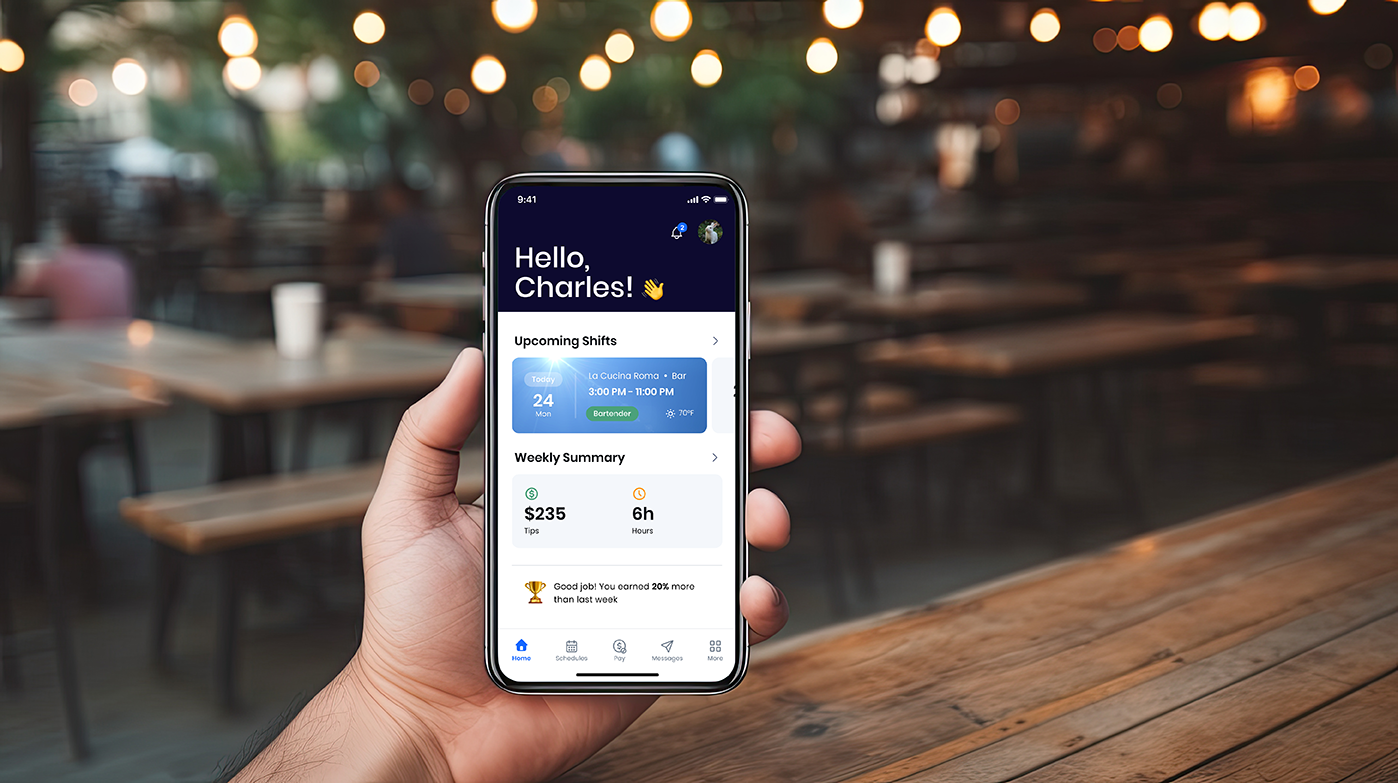
No more digging through unread emails or texts with unsaved numbers for the new schedule. Employee scheduling apps simplify communication, minimizing back-and-forth and confusion around who is on the shift schedule. Streamlining communication into one app makes things easier for restaurant managers and employees alike, enhancing the restaurant employee experience and helping you retain your best team members.
4. Carry the load
No two leaders are alike. But the best leaders have this in common: when the going gets tough, they take on the challenge alongside their team. In the restaurant business, that means jumping in to support on a slammed shift or filling in when there are gaps in the shift schedule. When your team knows you have their back, you'll gain their respect and emerge with a happier and more productive team.
There is, however, a caveat here—managers should stick to support roles and assign employees to serving as much as possible. Especially during slow periods, employees depend on working certain shifts and it might be perceived as unfair for a salaried or higher-paid manager to accept tips.
Restaurant scheduling adheres to the "with great power comes great responsibility" credo. Depending on your restaurant concept and the types of restaurant work you're scheduling, you'll need to keep in mind the earning potential for each shift.
Lucrative shifts might be in demand. Or, perhaps some of your employees work part-time at other corporate jobs and can only work a fixed schedule. Make the effort to get to know your employees so you can create the best schedule for the restaurant and employees alike.
5. Save time where you can
When it comes to a manager's duties, employee scheduling can be time-consuming. There are plenty of tasks that you won't be able to skimp on—training your team, interviewing potential restaurant staff, and reviewing payroll, to name a few. So, if there's an opportunity to save time on restaurant scheduling, there is no time to waste (literally).
Creating a restaurant schedule template on an Excel spreadsheet is helpful. Scheduling software that creates and communicates a restaurant schedule template for you, automatically taking into account labor costs and employee availability, almost feels too easy. Scheduling software can help you achieve a better work-life balance by minimizing your time in the back office. You don't need to create group chats, email PDFs, or text photos of the whiteboard when everyone can access the restaurant schedule from the employee app on their phones.
Even if scheduling is your passion, and you dream of split shifts and business hours, time-saving tools often have the additional advantage of helping save money. Scheduling software incorporates sales and labor data to optimize restaurant schedules. Instead of spending hours poring through spreadsheets and reporting data, you can tweak an already-optimized work schedule with the relevant information at your fingertips.
The time you spend creating your restaurant schedule is time that could be spent enhancing the guest experience, coaching your staff to sell more, and building a more profitable restaurant. There are enough items on your to-do list already, restaurant employee scheduling work doesn't need to be one of them.
6. Be mindful of burnout
Burnout has become a buzzword across industries, but it has become an especially hot topic in the restaurant industry. The COVID-19 Pandemic changed the calculus for many restaurant owners and employees, leading to a labor shortage and, eventually reevaluation of the restaurant labor landscape. Whether or not you address it, job-related burnout and stress are real, and it is likely impacting at least one of your employees.
While the fixed shift schedule gives your employees a consistent work schedule, it means certain employees work peak shifts regularly. Ultimately, the shift structure depends on team member preference and what makes sense for your restaurant concept.
A breakfast and lunch café might schedule employees to work the same schedule each weekday with a rotating shift on busier weekend days. At a restaurant with distinct dayparts and longer shifts, employees could benefit from a split shift which gives them a longer (unpaid) break between dayparts to reset.
During a busy shift, you're going to need your entire team to get through to the other side. When your employees work understaffed shifts, they can't deliver the excellent customer experience that keeps guests coming back and leads to better tips. The employee experience trickles down to the guest experience, and a burnt-out team can be a wrench in the works.
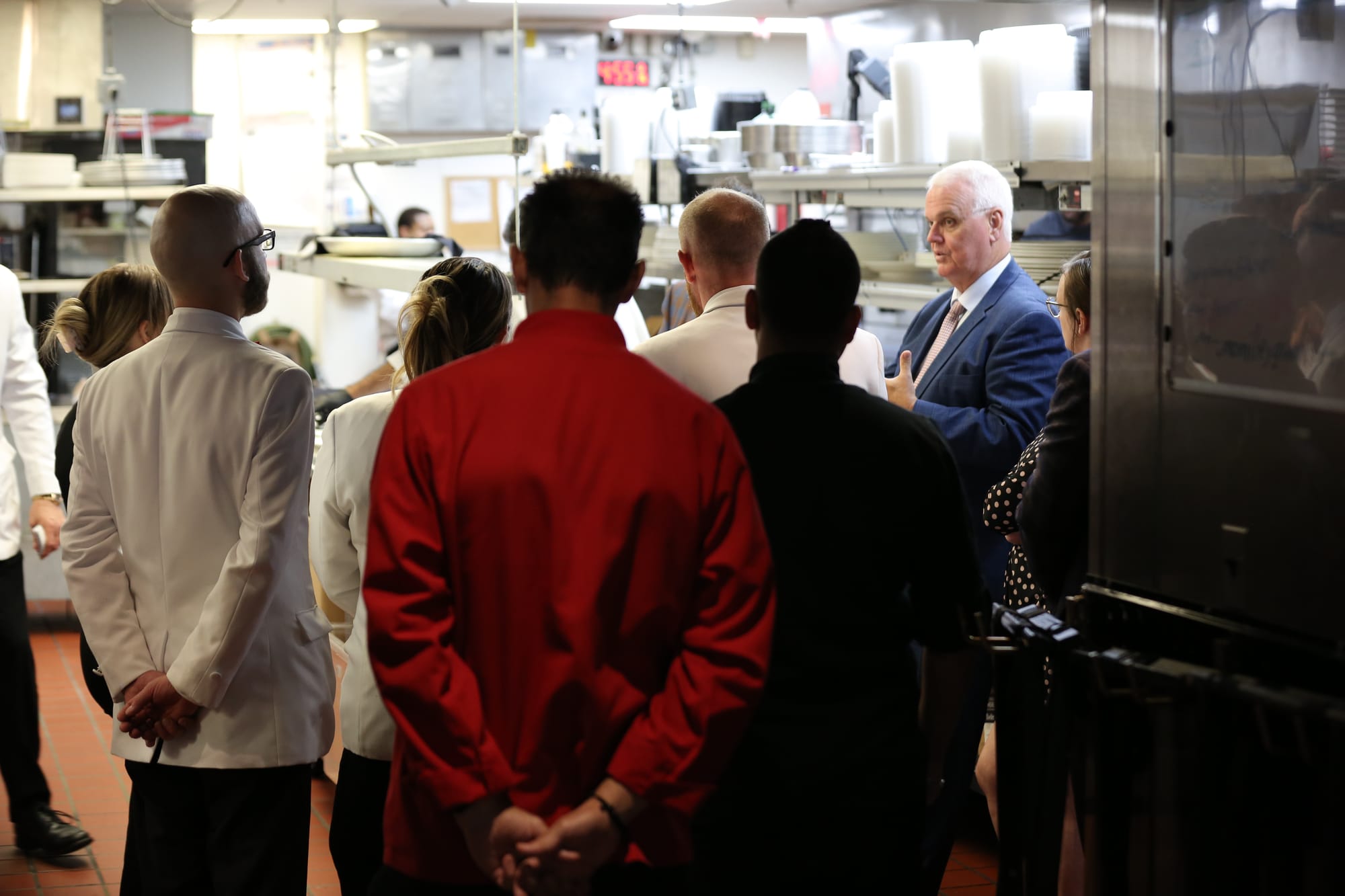
7. Reward your best servers, but be fair
At most restaurants, different shifts lead to different tips. Unless you operate on a unique tip pool structure, tip opportunities will likely factor into your staff schedule. It might be gut instinct to place your top-earning servers on the busiest shifts, rewarding them with tip opportunities and helping your restaurant maximize sales. It works to an extent, but repeating this pattern creates a positive feedback cycle where the best servers can keep their spots as top performers, and everyone else might struggle to make an impact.
Staffing employees looking to learn and grow on the same shifts as top performers gives everyone on your team the opportunity to make money and improve their skills. When all stars are staffed on the same shift as rookies, they can pick up advice on how to be better servers. Everyone's a winner.
Your restaurant schedule shouldn't be a jigsaw puzzle
Scheduling is a huge part of restaurant management. As with any task that involves other people, who have their own thoughts and priorities, it is never as simple as tweaking a work schedule template that you find on the internet. You have people's livelihoods to consider, making restaurant scheduling important to just about everyone. But creating a restaurant schedule shouldn't be the most time-consuming task on your to-do list.
Using restaurant schedule software to create and communicate an optimized work schedule template that can be tweaked based on employee preferences makes the whole process foolproof. Plus, your restaurant schedule won't be at the whims of someone leaning against the dry-erase board. Crisis averted.
